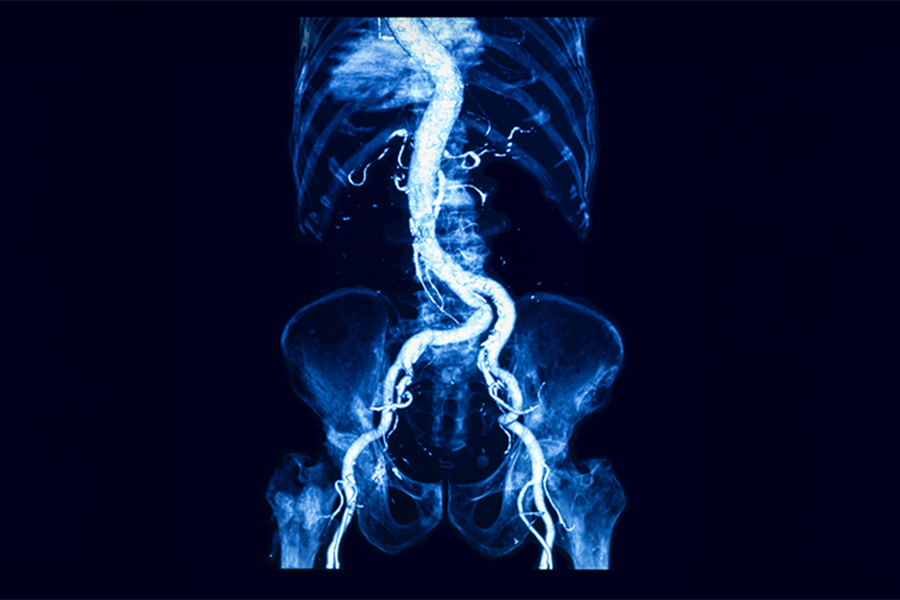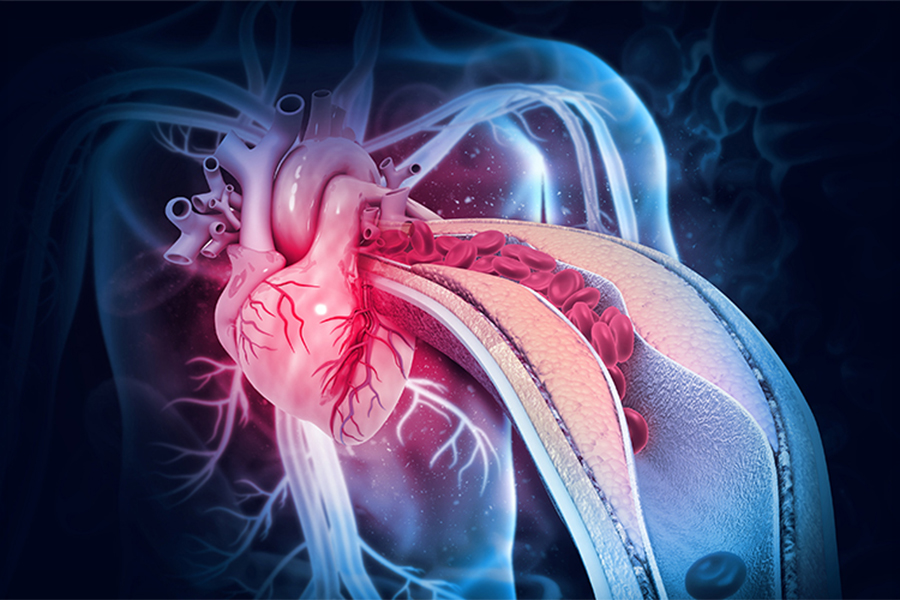
Abdominal aortic aneurysms (AAAs) are a silent but deadly threat and a leading cause of death in men over 65 in Canada. Currently, there are no treatments to prevent the growth and rupture of these aneurysms.
New research from UHN has uncovered how AAAs form and the impact of smoking, potentially opening the door to targeted treatments.
Although initially asymptomatic, AAAs are defined as a swelling of the abdominal aorta — the portion of the aorta that carries blood from the heart to the abdomen. Progressive weakening and dilatation (being stretched or widened) of the vessel wall make it more likely to rupture, which is a surgical emergency and results in death in 50 per cent to 85 per cent of patients.
There is limited understanding of how AAAs form and how risk factors such as smoking and arterial plaque buildup contribute to clinical outcomes.
A team led by UHN’s Dr. Clinton Robbins and collaborators used pre-clinical lab models to mimic these risk factors: cigarette smoke exposure and high cholesterol. They found that cigarette smoke drove aneurysm formation by damaging the cells that line the aorta.
Genetic sequencing techniques revealed that this damage triggered inflammation and caused immune cells called macrophages to gather within arterial plaque, where they release enzymes that degrade the elastic fibres of the aortic wall — eventually causing it to expand and rupture like a balloon.
The study also identified a specific type of inflammatory macrophage that was consistent across both pre-clinical lab models and humans and was central to this destructive process.
“This research sheds light on how smoking worsens AAA and pinpoints the immune cells behind the destruction,” says Dr. Robbins, Senior Scientist at Toronto General Hospital Research Institute, associate professor in the Department of Laboratory Medicine and Pathobiology at the University of Toronto, and co-corresponding and co-senior author of the study.
“It could open the door to new treatments that target these harmful pathways — potentially stopping aneurysms before they burst and become fatal,” adds Dr. Robbins, who is also a Tier 1 Canada Research Chair in Cardiovascular Immunology and the Peter Munk Chair in Aortic Disease Research at UHN.
This work was supported by generous donors to UHN Foundation.

No one ever changed the world on their own but when the bright minds at UHN work together with donors we can redefine the world of health care together.


